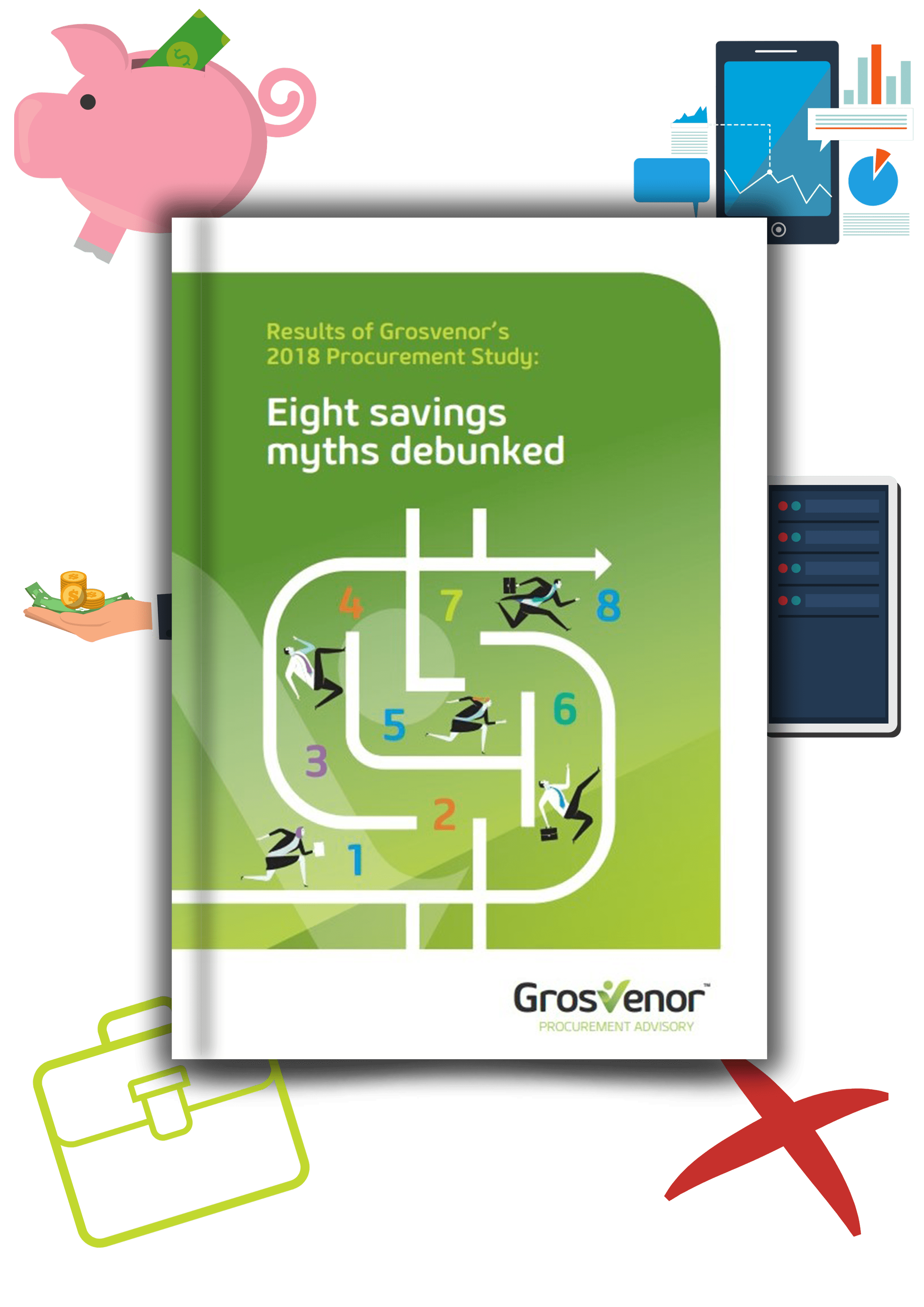The next wave of procurement savings

A 2014 Australasian study has found that public sector organisations have at least twice as many procurement staff as private sector organisations. It is probably easy to surmise that this is a consequence of the high accountability, probity and compliance expectations of government. In effect, procurement processes in the public sector are more involved than in the private sector.
Does this mean public sector procurement is half as efficient as the private sector?
To make an informed judgement about whether public sector procurement is inefficient, we would need to consider not only the number of staff, but also the results delivered. There is a strong argument that public sector procurement is also far less effective than in the private sector.
There is constant government and media attention on procurement policy rules and market testing as the be all and end all to achieving ‘value for money’. And yet professional procurement in most sectors has moved on from seeing market testing as the panacea to procurement savings. Many governments are failing taxpayers by continuing to focus on market testing and compliance with strict rules.
Probity and compliance – key drivers of process complexity
The study, conducted by Dr Stefan Gassner in conjunction with Procurement and Supply Australasia, surveyed Chief Procurement Officers (CPOs) from Australasia’s largest organisations. The most interesting findings were that:
- All procurement functions share the same primary objective – reduce expenditure on external suppliers. This seems reasonable given that cost is a major factor in determining value for money, and it is the aspect that procurement practitioners can influence, as the business generally determines the requirement.
- The median public sector organisation had more than twice as many procurement staff (full time equivalents or ‘FTE’) than the private sector, adjusted for organisational size. Using the average, the result was far worse for the public sector.
Having worked extensively across all levels of government procurement for nearly 18 years, particularly at the Commonwealth level, it is clear that a key driver of the need for more staff is the process complexity in the public sector created by the focus on probity and compliance.
The government clearly does need to be accountable for expenditure and conduct procurement in an equitable manner. Some examples arising from ICAC NSW demonstrate this. However, my experience, particularly within the Commonwealth, is that we have over-shot the mark. There is a considerable amount of process complexity and effort driven purely by compliance with rules, both written and unwritten, that cannot be justified by accountability and equity.
More importantly, this focus on compliance and process has been at the expense of keeping up with the latest procurement practices to better manage overall expenditure. At a procurement profession public sector conference in Canberra two years ago, I rather controversially presented the view that there was far too much focus on market testing (competitive tendering) to achieve overall value for the taxpayer.
Most public sector expenditure on external suppliers has already been subject to competitive pressure via market testing, particularly in the Commonwealth. Media reports to the contrary over the past couple of years reflect a misunderstanding of how contracts are reported on AusTender and in some cases the merits of market testing of a small number of high value contracts.
To continue to focus on market testing as the means to deliver further value will just deliver diminished returns at best, and take the focus off delivering other material savings at worst.
Market testing needs to continue to be a tool to keep prices low through competitive pressure. This shouldn’t be at the expense of other tools to lower cost.
Four cost control levers of modern procurement
Modern procurement practice focuses on four cost control levers to reduce overall costs. The first is about getting better prices out of suppliers. The last three involve turning the attention internally. This is often more difficult and where organisations concentrate next, but can deliver even more material savings. The new buzz word in procurement is ‘category management’, an approach that, if done effectively, seeks to maximise the opportunities afforded by these four levers. The levers are:
1. Pay less
Aggregate volume and use market leverage to negotiate better price and terms. This tactic is well known and is best exemplified by the whole of government coordinated procurement of goods and services such as air travel, telecommunications and deals with major software suppliers. These initiatives, some of which I have been intimately involved in, have delivered significant savings to the budget. It also involves ensuring buyers use the deals put in place and suppliers charge based on the negotiated rates. There remains considerable scope for more volume buying across all levels of government.
2. Buy less
Manage consumption to reduce demand. This tactic involves looking at ways to reduce what is consumed. It frequently involves use of policies, changes in processes and use of alternatives to consume less. Simple examples are double-sided printing to reduce paper consumption and video conferencing to reduce travel. There are many areas yet unexplored to deliver further savings.
3. Buy cheaper
Manage buying behaviour to avoid buying niche or premium goods and services, including avoiding add-ons and variations. Simple examples include avoiding full economy airfares or buying IT systems off-the-shelf without extensive modifications. This tactic requires public servants to be more accountable and justify the cost of the goods and services purchased; an area where the private sector is well ahead.
4. Buy smarter
Or implement other efficiencies. Reduce costs in the process of consuming the good or service. This tactic requires a total cost view of the process and involves process engineering skills typically beyond the traditional procurement practitioner. This tactic involves looking at reducing overall cost through such things as reducing waste, duplication, rework and internal processing costs. Simple examples include streamlining purchasing to payment processes for an expenditure category. In many cases it involves paying higher prices to reduce overall cost. A simple example might be buying business cards in smaller batches (at higher cost) to avoid the need to throw out a large number of cards when the inevitable change in name or title occurs.
The private sector has shown that these levers, particularly the last three, can deliver material savings over and above those delivered in recent times by market testing.
And yet, if you read any of the procurement policy guidance, while there is volumes about market testing, including right down to the detailed (read prescriptive) level, there is scant attention given to managing down overall cost.
It’s not all bad
There are many examples of where good things have been done.
For example, the Commonwealth’s whole of government approach to travel not only aggregated its considerable volume to secure substantial savings, it took additional steps to change the travel policies to significantly reduce the proportion of premium, full economy fares it purchased. Further, it has sought to reduce back-end processing costs through wider adoption of technology (eg. online booking) and payment solutions (eg. credit cards).
Using another Commonwealth example, there is no requirement that office space is market tested when agencies are looking to lease more space. While market testing has proven to be effective when looking for premises to be built, most other lease deals are secured via direct negotiations. These negotiations use market benchmarks (rents) to secure the best deal. More importantly, the Commonwealth has focussed on the other levers to reduce cost, particularly attempting to reduce the amount of space it needs to rent, by reducing the average area occupied per workpoint and offloading vacant space. Reducing the area rented is likely to have a far bigger impact on overall cost than market testing a lease deal to lower the rent per square metre.
But these examples are all too frequently isolated.
Time for change
Unless governments adopt a policy framework that focuses on cost control and use of levers other than market testing, significant opportunities will go unrealised.
Without a change in direction led from the top, public sector procurement will continue to be twice as inefficient and far less effective than the private sector.
Is the current focus on market testing, compliance and probity really worth it? Is that really what the taxpayer would define as value for money?









 We are all about sharing our expertise to help you and your organisation be the best it can be.
We are all about sharing our expertise to help you and your organisation be the best it can be.